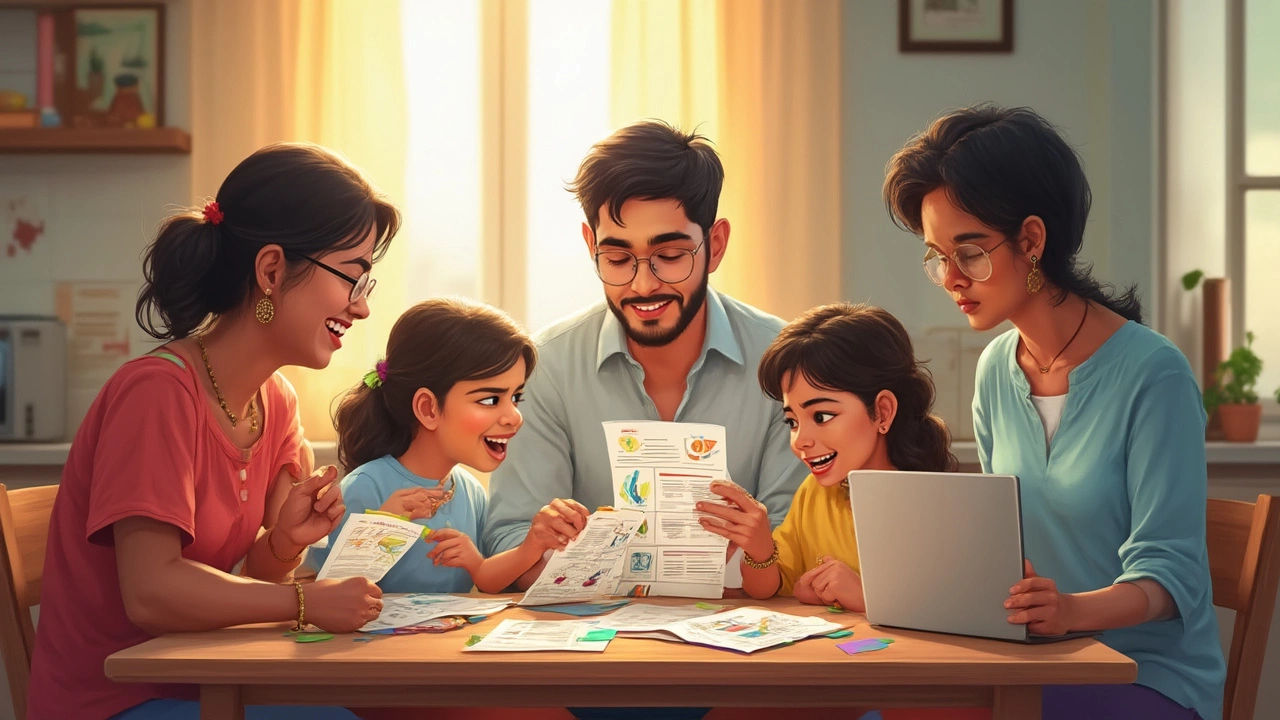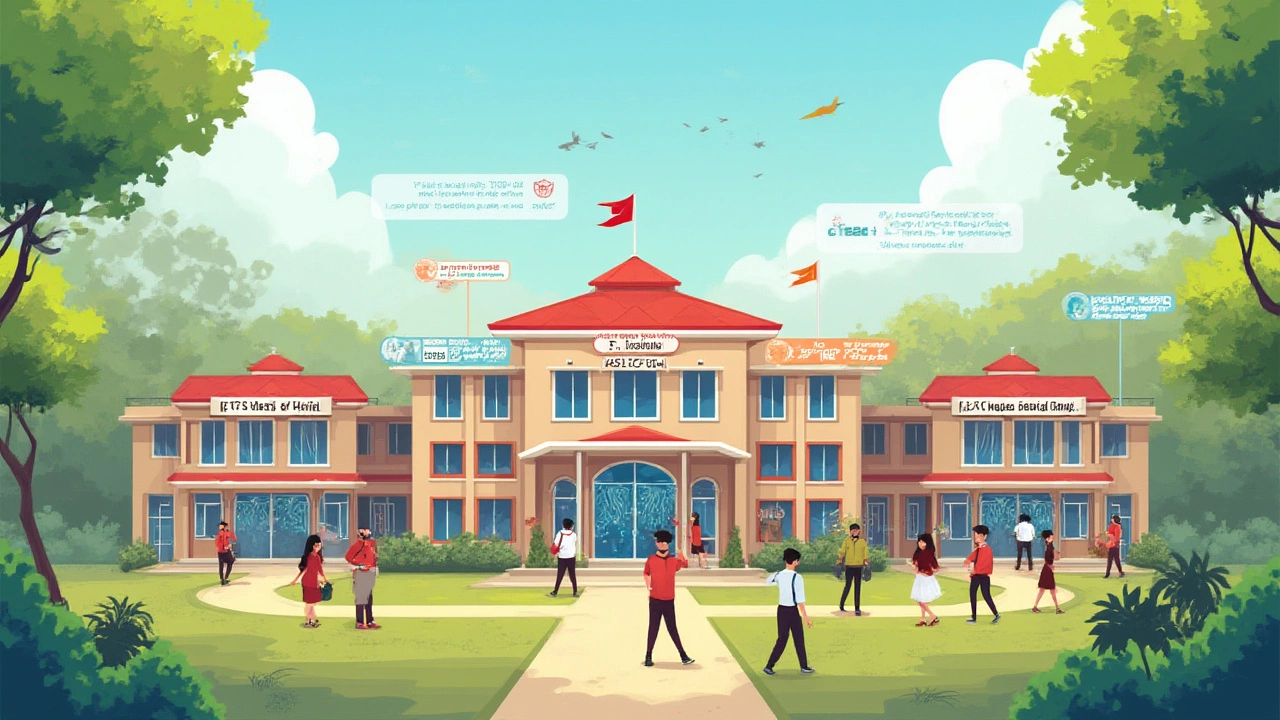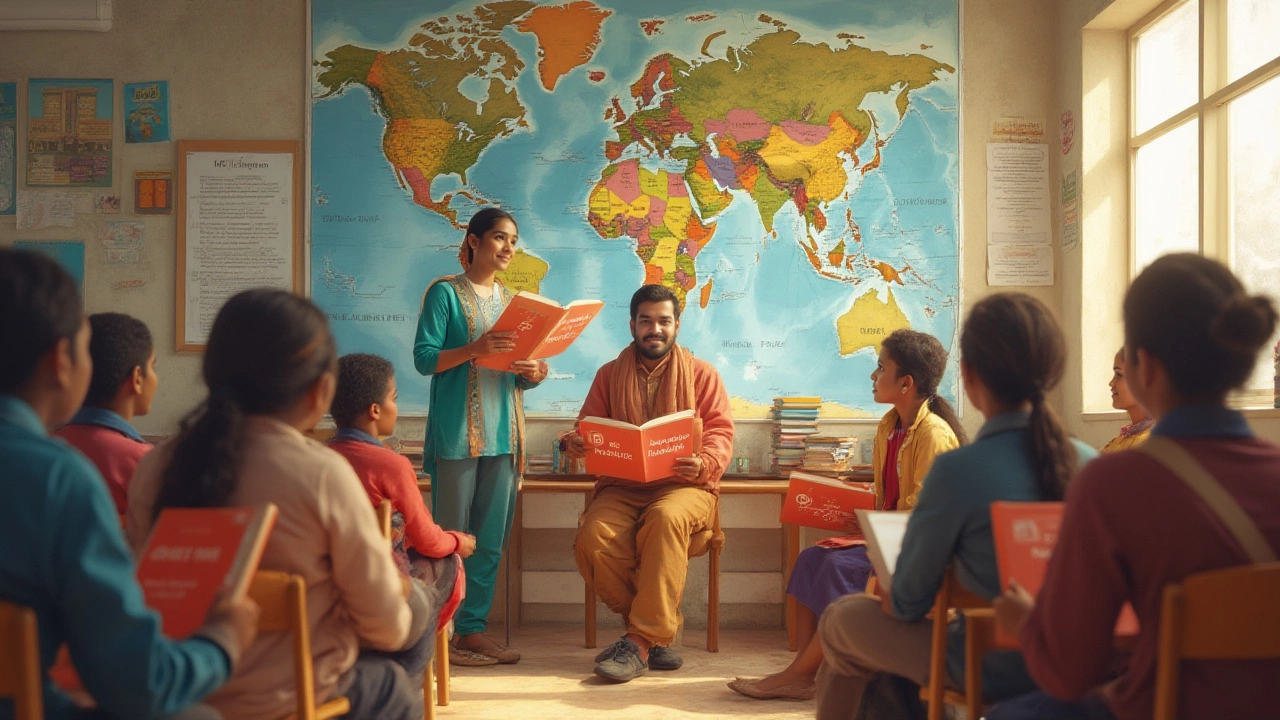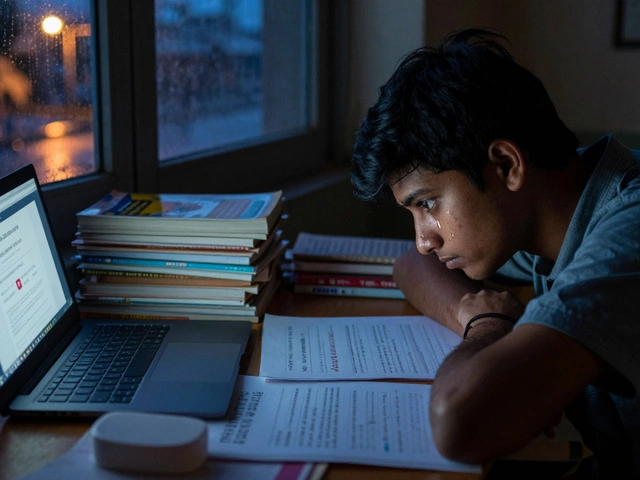Picture this: a dinner table, parents debating whether the International Baccalaureate will launch their kid toward Stanford, while an uncle claims CBSE kids ace every competitive exam in India. Meanwhile, an older cousin chimes in—she swears by the flexibility of Cambridge IGCSE. With so many schooling systems, how do you even begin to answer which syllabus is "best" in the world?
It’s not as simple as picking a trendy brand or falling for promises. The “best” syllabus tickles the genius out of kids, keeps pressure manageable, and earns respect from universities. Whether you’re an anxious parent, a student with big dreams, or a teacher caught in the comparison chaos, this guide is your cheat sheet for 2025. Here’s the reality behind the world’s most debated curriculum systems—splashed with facts you can actually use.
The Heavyweights: International Baccalaureate vs. CBSE, ICSE, and IGCSE
Let’s break down the “big four.” The International Baccalaureate (IB), Central Board of Secondary Education (CBSE), Indian Certificate of Secondary Education (ICSE), and Cambridge IGCSE sculpt millions of students worldwide. Their origins, goals, approach, and global appeal vary—sometimes wildly so. You’ve probably heard IB is ‘all about holistic development’ or that CBSE is an ‘exam-cracker’s paradise.’ But what’s under the hood?
Start with IB. Born in Switzerland in 1968, it aims to build international-mindedness, empathy, and research savvy. The IB’s Diploma Programme (DP) is a two-year course for 16–19-year-olds. Students study six subjects, write a “Theory of Knowledge” essay, complete a research paper (the Extended Essay), and rack up hours in creativity, physical activity, and service (the famous CAS requirement). It’s rigorous—studies from the IB’s own research office (2023) suggest IB graduates are 21% more likely to be admitted to top US and UK universities than peers from other systems. But here’s the catch: not every student thrives on endless essays, intellectual debates, and cross-disciplinary learning. The format fits self-driven, curious learners with ambitions abroad. Money matters, too—the IB can cost over $10,000 a year in premium schools.
Now look at CBSE—the Central Board of Secondary Education of India. With over 25,000 affiliated schools in India and about 240 in 28 other countries (as of January 2025), CBSE is wildly popular. Its focus is clarity: a straightforward, fact-based approach, well-structured textbooks, and a central exam system. This board preps kids particularly well for engineering, medical, and government entrance tests in India. In fact, according to data from the Indian Ministry of Education (2024), over 75% of Indian students who crack IIT and NEET exams come from a CBSE background. The curriculum shifts slowly, prioritizing time-tested topics over rapid change. So, if you’re aiming for competitive exams within India, CBSE is a powerhouse. But, critics argue it sometimes stifles creativity and doesn’t always value real-world problem-solving.
ICSE (Indian Certificate of Secondary Education) sits somewhere in the middle: more coursework, more English, a broader range of subjects. ICSE favors students who might lean into creative fields, law, or management later. Schools under this board, largely urban and private, are known for a balance—more literature and lab work than CBSE, without the philosophical deep-dives of IB. Families who want the option for Indian or international universities see ICSE as a chameleon—adaptable, thorough, but sometimes heavy on workload.
And then, the Cambridge path. IGCSE (International General Certificate of Secondary Education) traces its roots to the UK but claims 10,000+ schools in over 160 countries (data: Cambridge Assessment International, 2024). IGCSE prizes flexibility. At age 14 students curate their own combination of sciences, math, arts, and humanities— there’s room for budding scientists, linguists, or art prodigies. Marking is transparent, practical skills get real attention, and grading leans toward coursework instead of memory tests. That said, mention IGCSE in India, Singapore, or the UAE, and parents may worry—can IGCSE students crack JEE or NEET? Answer: sometimes yes, but the syllabus isn’t mapped for those exact needs.
Want a snapshot? Here’s a stat-heavy table for direct comparison.
| Syllabus | Founded | Main Focus | No. of Countries | Ideal for | Avg. Annual Cost (USD) |
|---|---|---|---|---|---|
| IB (Diploma) | 1968, Switzerland | Critical thinking, research | 159+ | Global university admissions | 8,000 – 25,000 |
| CBSE | 1962, India | Exams, core content | 29 | Indian entrance tests | 500 – 3,000 |
| ICSE | 1958, India | Language, wide coverage | 20+ | Flexible careers | 1,000 – 7,000 |
| IGCSE | 1985, UK | Subject choice, skills | 160+ | Overseas options | 5,000 – 20,000 |
Beneath the table and the brochures, reality matters most: the teaching quality, the student’s interests, the family’s long-term plans. Even the best syllabus gets nowhere if the local school just copies-and-pastes lessons from a textbook without real-world links or good teachers.

How “Best” Changes With Geography & Ambition
Let’s get brutally honest. Asking which syllabus is “best” is a bit like arguing if apple pie beats tiramisu. It all depends on who’s eating and why! The best fit changes with geography, long-term goals, and sheer personality.
If you’re planning a career in Indian government, medicine, or engineering, and you value affordability and a solid routine, CBSE is tough to beat. That’s why in 2024, 87% of students who qualified for India’s top government posts (UPSC, IAS, etc.) hailed from central or state boards, especially CBSE (source: Indian Public Service Commission annual report).
But say your family moves a lot—expats in Dubai, Singapore, or Africa, or perhaps you’re targeting universities in the US, UK, Germany, or Australia. Suddenly, IB or Cambridge IGCSE makes more sense. They translate neatly onto foreign university applications, familiar to admissions teams from Harvard to the Sorbonne. The literature from University College London (2024), for example, confirms IB students are typically seen as adaptable, mature, and used to research projects. That’s gold dust for global admissions offices.
Then there’s cultural comfort. Across big cities in India, Vietnam, and Africa, IGCSE has exploded—families want a taste of the British system, maybe because it emphasizes practical exams and subject personalization. Yet, walk into a top Delhi school, and you’ll find heated debates: Is the IGCSE chemistry syllabus rich enough for medical entrance in India? Will mastery of coursework and projects help kids ace written-only entrance tests?
Cost matters fiercely. A private IB or Cambridge school can burn a $20,000-a-year hole in your wallet. Meanwhile, top public or aided CBSE schools can offer a strong foundation at a fraction of the price, pooled with competitive coaching for those planning on cutthroat exams.
Here’s where it gets tricky: the child’s own personality. A research-driven kid who loves challenging essays, debating global issues, and taking art plus math? IB will feel like home. But the boy who learns best via repetition, shortcuts, and loves structured guidance will find safety in CBSE’s predictable patterns.
None of these dreams matter much if the local school mangles the curriculum—universities and employers consistently say that teacher quality, hands-on projects, and creativity-building activities are what really set students apart. That’s a bigger variable than syllabus choice alone. It’s why some CBSE toppers ace global Olympiads or why certain IGCSE batches wow with social projects—great teachers bend the rules and nudge kids beyond the regular textbooks.
Whenever you’re torn, scope out alumni success. Where have students of a certain syllabus actually landed—in universities or jobs you respect? Check school placement stats, alumni lists, and social media to see who’s made it where you want to go. That’s proof you can trust more than glossy marketing pamphlets.

Smart Tips & Facts for Choosing the Right Syllabus in 2025
Before you switch syllabuses or fill out a school admissions form, slow down. You want facts—not myths, not feverish WhatsApp rumors. Let’s dig into concrete things you can do to tilt the odds in your favor.
- best syllabus in the world looks different for different careers. No single school board guarantees international success or happiness. Make a short list of long-term plans—do you want to study STEM in India or the arts in Europe? Let your goals lead your syllabus.
- Talk to REAL students and parents in the board you’re considering. Forget the school principal’s pitch—use alumni groups, social media, or friends to get the gritty details. Ask about workload, teacher support, and after-school projects, not just grades.
- If your child may want to switch countries or school systems, choose flexibility. IB and IGCSE both offer easier cross-border transfers. CBSE and ICSE are best for India-specific exams and careers.
- Money isn’t just tuition. Factor in exam fees, project costs, and hidden charges. Many families get shocked by the high project, activity, and registration costs in international boards.
- Check university preferences. Some Indian colleges give extra points to IB or Cambridge kids, but many high-stakes exams (JEE, NEET) are mapped tightly to CBSE material. In the UK, top universities understand IGCSE and IB best. US colleges welcome all, but IB’s extended essays and projects can help applications stand out.
- Ask about learning style. If your child prefers rote learning, CBSE, or state boards are a smoother fit. Love group projects and in-depth essays? Push for IB or IGCSE.
- Quality trumps marketing. A well-run CBSE school does more good than a poorly managed “international” school. Research teacher experience, extracurriculars, and standardized test results.
- Certain countries value homegrown boards. In Singapore, the Singapore-Cambridge GCE A-Level is the ticket to local universities. In China, the Gao Kao system dominates. Ask locals or expats in your region what works for your city or country’s unique rules.
- If your dream is niche—like classical dance, advanced creative writing, or elite robotics—scan subject options carefully. Only some boards offer wildcards or niche electives.
One cool surprise in the last five years? Many international schools now blend syllabuses: CBSE schools partner with IB for project work, or ICSE schools offer parallel IGCSE streams for math whizzes and global-bound kids. Don’t be afraid of mixing and matching, within reason, if your school supports it.
Picking the "world’s best syllabus" is a personal quest, louder than any Twitter poll or school ranking. Ask hard questions, hunt for real data, and put your child—interests, ambitions, personality—at the center of the choice. That’s how you land on a syllabus that isn’t just a name, but a launchpad. And isn’t that what we all want at that dinner table—proof that we picked the map that really leads somewhere?





